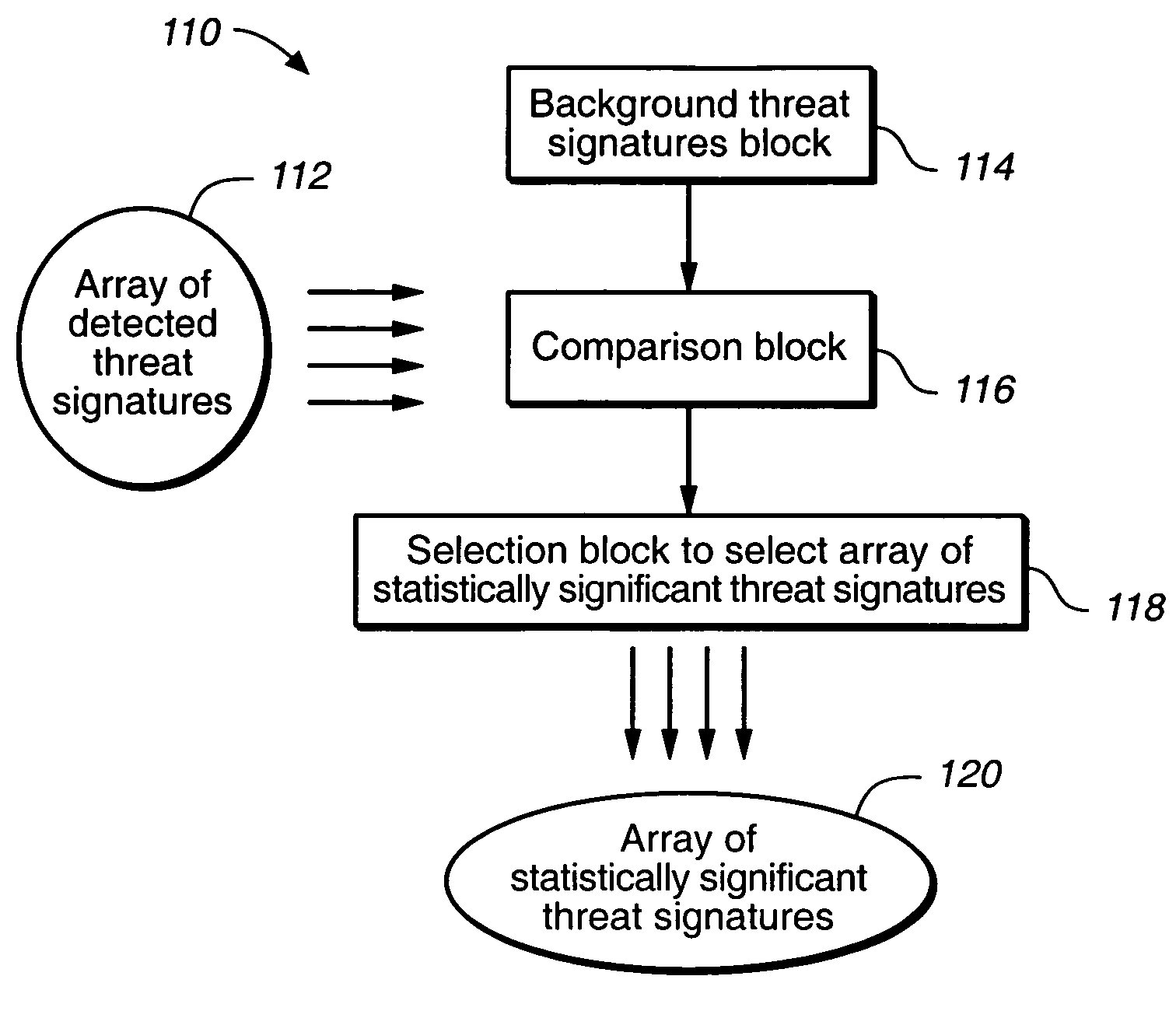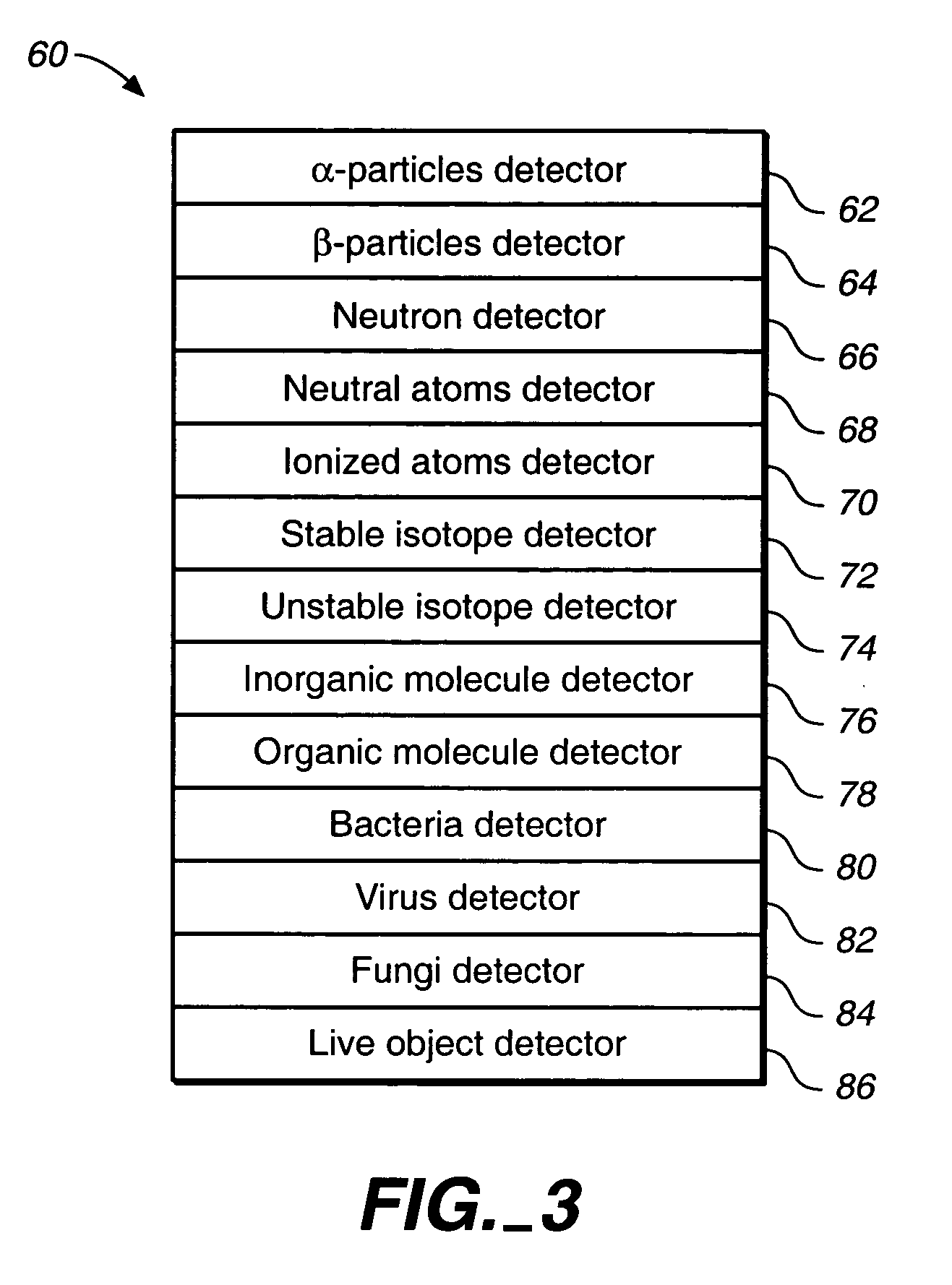Detection and identification of threats hidden inside cargo shipments
a technology for detection and identification of threats hidden inside cargo shipments, applied in material analysis using wave/particle radiation, instruments, nuclear engineering, etc., can solve problems such as difficult problems in protecting illicit cargoes trying to enter the country by land, sea or air shipping containers
- Summary
- Abstract
- Description
- Claims
- Application Information
AI Technical Summary
Benefits of technology
Problems solved by technology
Method used
Image
Examples
example i
Detection of a Person Hidden Inside a Cargo Container. N≧Narray—thershold=2.
[0230]Assume that the primary detection modality is chosen to be acoustic, and the secondary detection modality is chosen to be chemical. In this scenario, an acoustic detector continuously monitors the cargo container for abnormal sounds. It is trained to recognize the normal sounds of a cargo vessel: thrumming engines, pounding waves, banging containers, shifting contents, etc. Operating close to its threshold of detection, it frequently “hears” scrapping noises that could be associated with human activity. Without other evidence, the perceived threat would be wrong an unacceptable percentage of the time. However, whenever such a “potential” threat is detected, there is one more detector to be consulted with—a methane detector. The methane detector also continuously monitors the cargo container for abnormal methane levels. It is trained to recognize natural levels of methane from decaying organic matter, m...
example ii
Detection of a Dirty Bomb Hidden Inside a Cargo Container. N≧Narray—thershold=1.
[0232]The radioactive materials of choice are likely to be isotopes of cesium (Cs-137) and cobalt (Co-60). They have high activity levels, generate lethal amounts of radiation, and are commercially available. Since the radiation is fairly penetrating, a radiation sensor left alone in a sealed container for a period of time with a dirty bomb has a reasonable chance of detecting abnormal levels of radiation. If the detector can make energy-selective measurements, even if they are rather crude in their energy discrimination, the chances of detection increase significantly. In the event an alarm is generated, the apparatus 10 (of FIG. 1) of the present invention hardly needs to consult another sensor for confirmation. The detection of a corroborating signal would be nice but is probably unnecessary if a positive signal is detected by the radiation sensor alone.
[0233]Clearly, there are tradeoffs to be made in...
PUM
 Login to View More
Login to View More Abstract
Description
Claims
Application Information
 Login to View More
Login to View More - R&D
- Intellectual Property
- Life Sciences
- Materials
- Tech Scout
- Unparalleled Data Quality
- Higher Quality Content
- 60% Fewer Hallucinations
Browse by: Latest US Patents, China's latest patents, Technical Efficacy Thesaurus, Application Domain, Technology Topic, Popular Technical Reports.
© 2025 PatSnap. All rights reserved.Legal|Privacy policy|Modern Slavery Act Transparency Statement|Sitemap|About US| Contact US: help@patsnap.com



